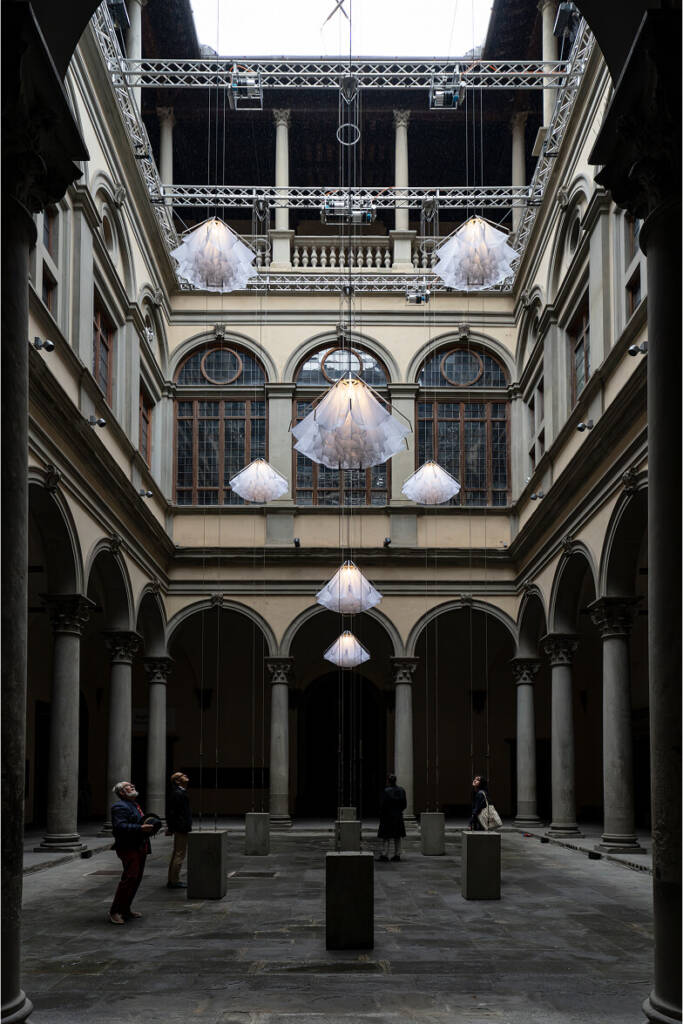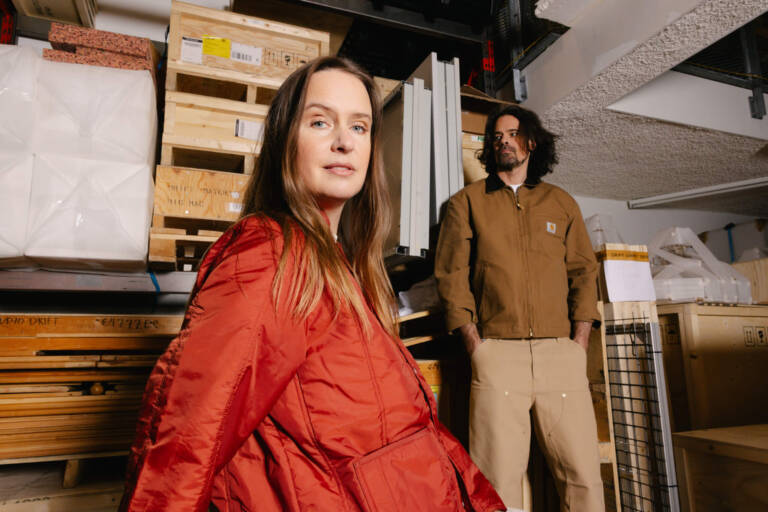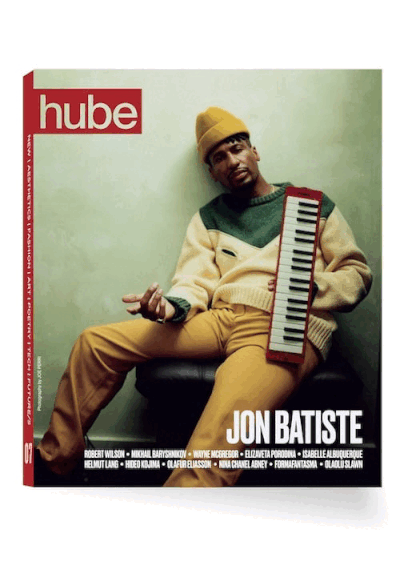

Installation view, SHY SOCIETY, 2024, Palazzo Strozzi, Florence
Photography by ELA BIALKOWSKA
Courtesy of DRIFT
Through experiential sculpture, installation, and performance, DRIFT—a studio founded by Ralph Nauta and Lonneke Gordijn—is redefining the perceived boundaries between art and technology, human and nature. Since 2006, the studio has focussed on creating works that use technological tools to reveal the intricacies of our natural world as a way of restoring our connection to it. In collaboration with programmers, scientists, designers, architects, and engineers, the multidisciplinary studio—which comprises 40 members including Ralph Nauta and Lonneke Gordijn—creates pieces that serve as both dialogue and bridge between contrasting forces, raising questions about how we live today and what our future might look like.
In late 2025, DRIFT will unveil its most ambitious project to date: Drift Museum, an 8,000-square-meter space dedicated to art that reconnects humans to nature. Through immersive installations, DRIFT aims to bring us back to the present moment and away from real-life distractions. Located in the historic Van Gendt Hallen, a former industrial complex of five factory halls in the heart of Amsterdam that was designed by Dolf van Gendt in 1898, the museum will showcase works that build on DRIFT’s mission to illuminate the parallels between nature and technology while also engaging with the building’s unique architectural heritage. Accessible to guests via boat, Ralph Nauta and Lonneke Gordjin describe the unique experiential site as “the outcome of everything we have been working towards for the past 17 years.”
hube: Scientific and technological progress is often viewed with a mix of hope and fear. Since progress is inevitable, what advice would you give to pessimists?
Lonneke Gordijn: Ralph and I sometimes think quite differently about the implementation of technology in the future. Basically, it’s the conversation that fuels our artwork.
Ralph Nauta: I think it’s important to be critical—we should be constantly questioning things. We need to overthink the negative outcomes of new developments. If we don’t, we’re really shooting ourselves in the foot. Right now, we’re at a point in time where technological advances can either elevate us or destroy us. So we need to be very, very careful. If we just assume that everything will have a positive outcome and don’t engage in critical debate, there will be no turning back. Once we implement certain technologies—especially now with AI and quantum computing—it’s game over. We’ve reached a point where we need to be very critical and take these issues seriously.
LG: This could easily turn into a five-hour conversation. What I think is most important right now has more to do with the state of the world today than the technology that shapes it. There’s a big lack of vision at the moment. What kind of world do we want to create? I don’t see a shared perspective. Everyone has their own individual views. I always approach things with questions: “What would nature choose? How would nature respond to this situation?” When presented with several options, nature always takes the path that is smoother and easier. Of course, it also needs to fight to survive difficult situations, but there is always a clear direction: nature wants to live, it wants to survive.
But no human just wants to just survive; we all want to live in a certain way, to a certain standard. I think the key is creating a shared vision of what the future should look like, and working towards that vision with technology and everything we do. We are so fragmented, there are so many “islands” of people, and as a result, we’re not making any progress, we’re just fighting each other.
So, what do we ask pessimists who don’t believe in the future? We ask them to come up with a solution, to come up with a vision of the future that inspires people to move forward together. Right now, there’s a lot of negativity about the future, so we need more positive perspectives. That’s how we’ll find a way forward.

